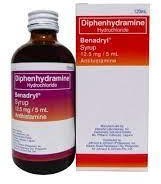A nurse is assessing a child for scabies. Which of the following findings should the nurse identify as a manifestation of scabies?
Scaly lesions on the inner thighs
Rash with red macular lesions on the scalp
Bull's eye edematous area on the groin
Maculopapular skin burrows on the hand
The Correct Answer is D
Rationale:
A. Scaly lesions on the inner thighs are not typically characteristic of scabies. Scabies lesions are often burrow-like and appear as small, raised, grayish-white or skin- colored lines, not scaly.
B. A rash with red macular lesions on the scalp is not characteristic of scabies.
Scabies lesions typically occur in areas with thin skin, such as the webs of fingers, wrists, elbows, axillary folds, waistline, buttocks, and genitalia.
C. A bull's eye edematous area on the groin is not characteristic of scabies. Scabies lesions usually present as small, raised, grayish-white or skin-colored lines or bumps, not as bull's eye patterns.
D. Maculopapular skin burrows on the hand are a classic manifestation of scabies.
Scabies mites burrow into the skin to lay eggs, causing raised, linear, erythematous, and excoriated lesions, which may appear as small papules or vesicles with a surrounding erythematous flare.
Nursing Test Bank
Naxlex Comprehensive Predictor Exams
Related Questions
Correct Answer is ["0.6"]
Explanation
Rationale:
First, we need to convert the child's weight from pounds to kilograms. We can do this by dividing 55 by 2.2, which gives us 25 kg.
Next, we need to multiply the dose of diphenhydramine by the child's weight to get the total amount of medication needed. We can do this by multiplying 1.25 mg/kg by 25 kg, which gives us 31.25 mg.
Finally, we need to divide the total amount of medication by the concentration of the solution to get the volume to be administered. We can do this by dividing 31.25 mg by 50 mg/mL, which gives us 0.625 mL.
To round the answer to the nearest tenth, we look at the hundredths place and see that it is 5 or more, so we round up the tenths place by one. Therefore, the nurse should administer 0.6 mL of diphenhydramine IV to the child.
 |
Correct Answer is D
Explanation
Rationale:
A. Sweating is more commonly associated with hypoglycemia (low blood sugar) rather than hyperglycemia (high blood sugar).
B. Tremors are more commonly associated with hypoglycemia.
C. Pallor is not typically associated with hyperglycemia.
D. Thirst (polydipsia) is a classic symptom of hyperglycemia in diabetes mellitus, as the body tries to dilute the excess sugar in the bloodstream by increasing fluid intake.
Whether you are a student looking to ace your exams or a practicing nurse seeking to enhance your expertise , our nursing education contents will empower you with the confidence and competence to make a difference in the lives of patients and become a respected leader in the healthcare field.
Visit Naxlex, invest in your future and unlock endless possibilities with our unparalleled nursing education contents today
Report Wrong Answer on the Current Question
Do you disagree with the answer? If yes, what is your expected answer? Explain.
Kindly be descriptive with the issue you are facing.
